Google Nest Wifi Pro vs Amazon Eero Pro 6E Router Comparison
Every since WiFi 6 started making headway in the consumer and business client hardware market, the developments that arose in order to make even bigger gains in network performance and bandwidth have been remarkably quick to arrive, with two of the biggest internet players in the world getting in on this in 2022 – Google and Amazon. Although moves by brands like Synology to open up access to the 5.9Ghz frequency (see Synology RT6600ax and WRX560 Routers) it is WiFi 6E and it’s access to the 6Ghz wireless frequency that is commanding most of the attention. If you are more of a network technology novice, or simply want access to this faster/larger-bandwidth WiFi in your IoT smart home setup without all the fuss, the recently released Google Nest WiFi Pro and Amazon eero Pro routers are WiFi 6E Routers will be tremendously appealing, are hugely mesh capable AND are also developed in tandem with their respective smart home appliances. Indeed, at a casual glance, the Google Nest and Amazon eero are remarkably similar routers, with similar in general hardware, wireless coverage and smart home support within their own branded ecosystems – yet one of them is SIGNIFICANTLY more expensive individually and as a mesh router deployment setup than the other (Almost twice the RRP in fact. So, what gives? Why the big difference in price? Is choosing the more affordable Google Nest WiFi Pro mean you are losing out on something in the Amazon eero Pro 6E Router? Or is it just a good deal? Let’s compare these two routers and work out which one deserves to be your WiFi 6E Router in 2022/2023.
What Can BOTH the Amazon eero and Google Nest 6E Router Do?
Before we go any further though, it is worth checking that either of these routers will actually suit your needs. So, let us quickly cover ALL the things that BOTH the Amazon eero Pro and Google Nest WiFi Pro 6E Routers both feature and/or support. Remember, WiFi 6E is completely backwards compatible with traditional WiFi 5 and WiFi 5. Additionally, both of these routers only feature RJ45/Cat/Copper connections for their WAN/incoming internet connection. So, in order to have these running in your home or business, you are going to need a wall outlet (supplied and fitted by your ISP), convert an existing coax connection to RJ45 Copper or use your original/ISP router as a modem point and connect the Google/Amazon Router WAN to an available LAN port on the older router/modem. Here are the similarities between the Nest WiFi Pro and eero Pro 6E:
- Expandable 802.11s mesh Wi-Fi
- Wi-Fi 6E, 802.11ax Wi-Fi
- 2000-2200 square feet of Wireless Coverage per router/node
- 6000-6600 square ft of coverage Maximum in a 3 (Main + 2x Node) Setup
- AX5400 OR AX4200 / 4.2 Gbps Bandwidth (across all bands, frequency in region dependant)
- Tri-band (2.4 GHz/5 GHz/6Ghz) Wi-Fi

- 2×2 (6 GHz), 4×4 (5 GHz) and 2×2 (2.4 GHz) Band
- Auto-QoS for video calls,
- Automatic 802.11.k/v client roaming
- Proactive band steering – directs your devices to channels with the best performance
- Low Energy Bluetooth (BLE)
- 100x Devices handling per WiFi Point (so, 300x in a 1 router, 2 node mesh setup)
- WPA3 encryption and Automated Security Updates
- Support of Thread and Matter
Google Nest Wifi Pro vs Amazon Eero Pro 6E Router – Price
So, let’s get the vulgar subject of money out of the way first! When Google first revealed their planned Nest WiFi Pro 6E router, the first thing that caught alot of people’s eye was that although a single router was $199, which is similar in price to the bulk of 6E routers in the market at this scale, the three pack (so 3 mesh routers, that can cover a maximum potential 6,600 sq feet) was just $399 (RRP, tax etc). So that meant that each unit would set you back around $133, which is exceptionally good value for a 6E router of this hardware level and coverage. Then Google (almost on day 1) started contacting existing Nest users and offering a whopping 30% discount, which dropped the prices significantly from:
- $199.99 – $60 OFF = $139.99
- $299.99 – $90 OFF = $209.99
- $399.99 – $120 OFF = $279.99
THAT is an incredibly compelling reason to opt for the Google Nest WiFi Pro! The Amazon eero Pro 6E Router (up until very recently) has been quite rigid on its pricing, arriving at an RRP of $299, $499 and $699 for the 1-2-3 mesh pack respectively. I say ‘up til recently’, as obviously as soon as the Google Nest dropped, Amazon/eero started running promotions. Now the Amazon eero has been slashed to $299 for 1 unit, $299 for 2 units (that is not a typo) and $419 for the three pack. This has HUGELY closed the pricing gap between them and although we are still talking about two quite similar WiFi 6E routers, there are actually two very SIGNIFICANT reasons that Google listed the Nest WiFi Pro Router at this reduced price. Before we get onto that, let’s see how they measure up in scale, internal hardware and warranty (note, in multi router/node packs, all units are identical in hardware – there is no Primary/Satalite router differences):
| Google Nest Wifi Pro | Amazon Eero Pro 6E | |
| Design |  |
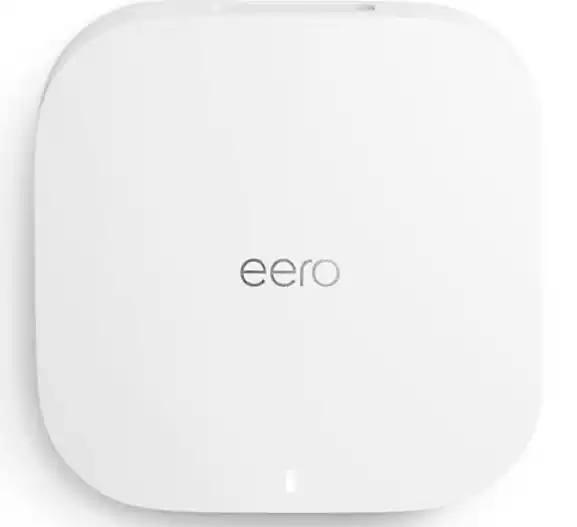 |
| Price for 1 | $199 | $299 |
| Price for 2 | $299 | |
| Price for 3 | $399 |
|
| Internal Processor | Dual Core 1Ghz | Dual Core 1Ghz |
| Internal Memory | 1GB | 1GB |
| Internal Storage | 4GB eMMC | 4GB eMMC |
| Size | 4.61 in. x 5.12 in. x 3.35 in | 5.50 in. x 1.90 in. x 5.50 in |
| Warranty | 2 Years | 1 Year |
Now, a hugely overlooked difference between the Google Nest and Amazon eero is the warranty! These days, with so many devices arriving with crucial ‘day 1 firmware updates’ and rolling support of devices continuing much longer down the line after release, we are seeing more of our purchases (physical and digital) arriving on the scene a little ‘undercooked’! Therefore warranty and support via a manufacturer’s guarantee is actually significantly more important than it has ever been. With these two companies having a brand value (in excess of) 1 TRILLION DOLLARS, it makes me a little sad that one of them seemingly scrimped a bit on the hardware warranty! The Google Nest WiFi Pro arrives with 2 years product warranty and the Amazon eero Pro 6E router has 1 year! Now, we are talking about a device that will be on 24×7, almost never turned off in fact. Also, this is an incredibly crucial device in any home or business. The idea that most IT hardware STARTS at 2 years warranty (and a number of cheaper Netgear switch products arrive with a lifetime warranty, though not in their Netgear Orbi 6E series), yet the Amazon eero only has 1 year included is pretty tight! But, we aren’t done yet Let’s discuss one of those two reasons that Google released the Nest WiFi Pro so affordably (comparative to other 6E mesh router setups) and the reason for that discount to existing Google Nest users…

Backwards compatibility! With such a huge emphasis these days by brands to ask us to keep sustainable, recycle those cups and keep on top of our plastic waste, the fact that the Google Nest WiFi Pro is NOT backwards compatible is absolutely disgraceful! The Google Smart home range of IoT/network hardware and their accompanying router releases (the Google WiFi Mesh and Original Nest devices) are designed to create a single ecosystem in your home or business, with those previous generation of router devices allowing backwards compatibility to gradually replace nodes in your network. This results in a much more gradual spend by the end user AND allows you to only replace the areas of your wireless mesh that need upgrading/replacement as needed. The fact that, in order to switch your Google Home setup from the previous gen WiFi mesh to the Nest WiFi Pro mesh, you need to replace ALL nodes (as the old and new gen do not communicate) is pretty bad. These new Routers are tri-band (2.4G/5Ghz/6Ghz) and the fact you cannot create a backhaul or dedicated channel connection between the old and new gen (even at the risk of reducing the total coverage till you feel ready for a larger scale upgrade) feels a little TOO crafted for me and not something that presents too high a technological hurdle!Here is a quote from Google on the subject:
Nest Wifi Pro isn’t backwards compatible with earlier generations of Nest Wifi or Google Wifi mesh systems. This means that your Nest Wifi Pro can’t be combined with earlier versions of Nest Wifi or Google Wifi routers or points in a single mesh network. To add more coverage to a Nest Wifi Pro network, you need to add additional Nest Wifi Pro routers as points in the Google Home app. For older generation mesh networks, you can continue to add Nest Wifi and Google Wifi devices to expand your network. The Google Home app supports one Wi-Fi network per home in the app. However, with a few exceptions, most devices that connect to Wi-Fi will be compatible with Nest Wifi Pro, just as they would be with Nest Wifi or Google Wifi. Learn more about compatibility for Nest Wifi and Google Wifi products. Nest Wifi Pro, a Wi-Fi 6E device, uses the 6 GHz band to make connections and form its mesh network. This allows faster, more reliable connections to occur and for data to be transferred within your network more smoothly. Learn more about the benefits of using a 6E Wi-Fi network. Earlier generation products such as Nest Wifi and Google Wifi operate using the 5 GHz band for mesh connections. They don’t have compatible hardware to support Wi-Fi 6E, so they can’t be combined in a mesh network with Nest Wifi Pro. On the other hand, downgrading Nest Wifi Pro’s mesh to mesh with older systems would result in reduced performance for the entire network as the mesh would no longer run in 6 GHz on wider channels. – Google Nest Help
Source HERE
I am pleased to confirm that the Amazon eero is completely backwards compatible and how rare it is to champion Amazon on the subject of sustainability! So, as you can see, THAT explains why Google launched this mesh pack of the Nest WiFi Pro so affordably AND provided those significant discounts to existing users. Still feels like incentivising waste though and counterproductive to sustainability! In terms of price, the Google Nest WiFi Pro is definitely the lower in price (especially if you are opting to move up from your existing Nest setup), but you have to take into account the reasons that it was launched at a lower price than the Amazon eero Pro 6E router, despite being available in the market longer. Next, let’s discuss the network connectivity of these routers.
Google Nest Wifi Pro vs Amazon Eero Pro 6E Router – Network Connectivity
As mentioned at the start, the hardware and coverage of the Google Nest WiFi Pro and Amazon eero Pro 6E Routers are very similar, with both of them arriving with tri-band coverage 2.4/5/6Ghz), dual ethernet ports (WAN and LAN), at least 2,000 square feet of wireless coverage (remember – the higher the frequency, the lower the coverage distance and effectiveness), WPA 3 level encrypted transmissions, mesh support and support of upto 100x client devices connecting to each router point. Indeed, it is tough to see the main hardware differences between them, but if your home/business internet is greater than Gigabit in upload/download, then there is one rather crucial difference:
| Google Nest Wifi Pro | Amazon Eero Pro 6E | |
| Design |  |
 |
| Speed/Bandwidth | 4200-5400Mbps (AX4200/AX5400 – Region Dependant*) | 4200-5400Mbps (AX4200/AX5400 – Region Dependant*) |
| # of Bands | 3, 6Ghz, 5Ghz and 2.4Ghz | 3, 6Ghz, 5Ghz and 2.4Ghz |
| Highest WiFi Standard | 802.11ax 6E Standard | 802.11ax 6E Standard |
| Reported Range | 2,200 Square Feet | 2,000 Square Feet |
| Highest Encryption Level | WPA3 | WPA3 |
| WAN/LAN Max Bandwidth | 1Gb/s | 2.5Gb/s |
| Ethernet Ports | 2x | 2x |
| Maximum Client Devices at Once | 100x (per Router/Node) | 100x (per Router/Node) |
*Actual speeds depend on your Internet Service Provider, network conditions, connected device, local regulations and environmental factors. Some regions have restrictions in place on certain frequency use, hence the difference in Speed/Bandwidth being shown
This is the other reason that the Google Nest WiFi Pro arrived at a much more affordable price point, it arrives with a maximum Gigabit WAN and LAN port. Now, Gigabit (1000Mb or 100MB/s+ bandwidth) has been around in our homes and businesses for well over 20 years. However, in recent years we have been a big push towards greater than gigabit ethernet and many, MANY more client hardware is starting to arrive with 2.5GbE at the same price as 1GbE network ethernet ports. Even ISPs have started rolling out service included (i.e free router with your internet connection) 2.5GbE & WiFi 6 Routers, which is pretty impressive. The fact that the Google Nest WiFi Pro arrives with wired ethernet at 1Gb, yet it has the network bandwidth to support at least 4.2Gb locally on the network (i.e 100Mb/s of maximum internet connectivity shared with users who have an in-hosue bandwidth potential of 420MB/s at least) is pretty poor and undermines the word ‘Pro’ a little in the model name. The Amazon eero DOES arrive with a 2.5Gb (and 1Gb) ports, which immediately makes it more attractive to users who have greater than gigabit internet speeds coming from their ISPs.
| Google Nest Wifi Pro | Amazon Eero Pro 6E |
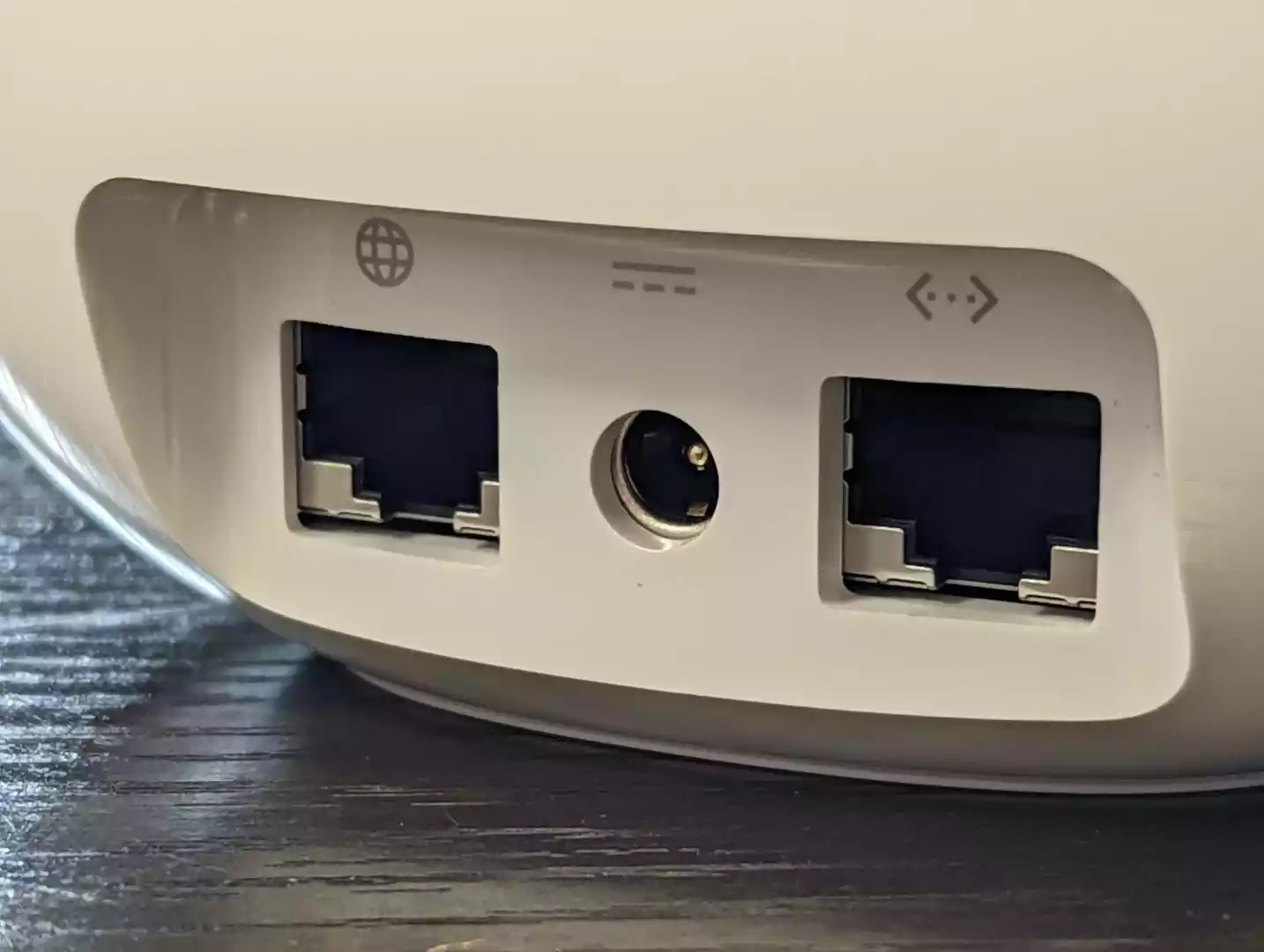 |
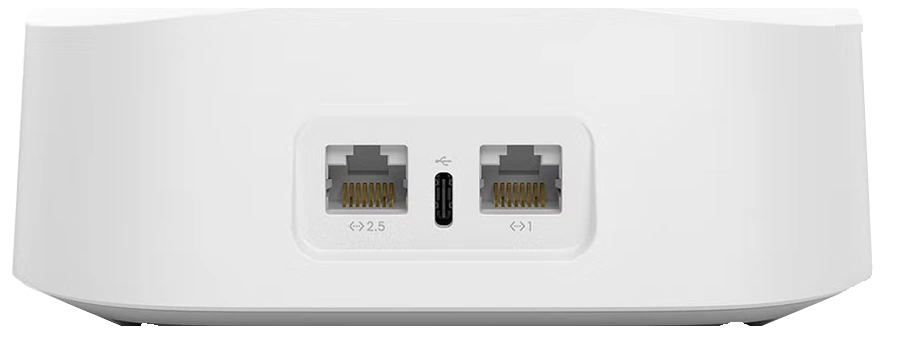 |
Now, although greater than Internet packages and availability is by no means completely globally available, it IS alot more accessible than ever before. Pretty much all of the biggest cities in the word have fiber connectivity and even more rural/remote areas that have had their internet pipelines installed/upgraded in recent years have had the foresight to use scalable fiber cabling to allow a huge increase potential in their data connectivity to be made available to homes/businesses. Big ISPs have been very quick to provide premium (and some not-so-premium) 2Gb and higher data plans, and therefore buying a new prosumer router in 2022 that is capped at 1Gb on the WAN is a bit disappointing (especially when you factor in Google Fiber at 2Gb download and 1Gb upload at $100). Plus, having all that tremendous in-house bandwidth in WiFi 6E and the 6Ghz frequency is going to be less impressive when you connect to the internet and its getting bottlenecked at the source!
The gigabit network connectivity on the Google Nest WiFi Pro router means that, for many high-speed internet users (and those considering an internet upgrade in the near future to higher than 1Gb speeds) it is not the ideal 6E Router choice, even at that price point and the Amazon eero wins this round thanks to the inclusion of 2.5GbE on board for me! If you are considering adding/integrating 2.5Gb/s network connectivity into your home or office environment (via USB-to-2.5GbE adapters like these for as little as $19 or with greater bandwidth switches), then watch my ‘Before You Buy’ video on 2.5GbE below, as it covers the do’s, the Don’ts and whether you can/will feel the benefits:
Google Nest Wifi Pro vs Amazon Eero Pro 6E Router – Software Services
This is going to be a much shorter section, as these two routers have their own proprietary mobile application (no desktop client app or easy means to access the router control panel via a web browser) for managing the Google Nest WiFi Pro and Amazon eero Pro 6E Routers, which is chiefly designed to manage the larger smart home network. That means that there are several configuration options that a dedicated router management application would likely have that are absent on these, as Google and Amazon respectively wanted to keep things as user-friendly as possible. When it comes down to it, both applications will be completely accessible to those that are already locked in on each brand’s respective ecosystem and whether you are using Google Home or Amazon smart home, these apps provide the following features and control:
- Smart Home Integration
- Fast/Easy Setup
- DCHP/Manual Support
- New Device Notifications
- Guest Wi-Fi Mode
- NAT Settings
- Port Forwarding
- Family/Client Connection Management
- Parental Controls
- Access Schedule
- Site Blacklisting
- Auto/Manual Band Switching
- Internet Speed Test
- Privacy Sertings
- IPv6 Enable/Disable
- DNS/UPnP Configuration
- PoS and QiS Settings
- Automated Security Updates
- VPN Support
Between the Google Nest WiFi Pro and the Amazon eero Pro 6E Router mobile application, the edge goes to the Google Home application, thanks to it’s simplicity and largely all-inclusive features. The ‘eero Home WiFi System’ application for the eero Pro 6E, on the other hand, DOES manage to include a lot more network reports and information than the Google Home application, BUT, recent changes to the eero subscription model mean that a few of the (arguably basic) features that you would expect for managing your network’s security and safety have now switched to paid plans. Although some of these are understandably premium services that require additional resources and support, things like ‘content filtering’, ‘Weekly Reports’ and ‘Parental Controls’ are available at no additional cost with the bulk of other router providers in 2022/2023.
Google Nest Wifi Pro vs Amazon Eero Pro 6E Router – Conclusion
If you are an existing Google or Amazon WiFi owner, then chances are that the new 6E Router from your existing brand will be your pick. However, it is worth noting that the Google Nest WiFi Pro option is dependent on restarting the building of your WiFi Mesh network from scratch because off that lack of backwards compatibility. Plus the lack of greater than gigabit WiFi does potentially mean that if/when you have faster internet speeds sent your way, you will hit a bottleneck. The Amazon eero Pro 6E router on the other hand has backwards compatibility, 2.5Gb WAN connectivity and has seen recent price drops in efforts to remain a competitive alternative to the more recently launch NEST router. However, do factor in that the eero router does place a number of the more wildly available services and features of its network management/safety behind a subscription wall, when Google (and indeed many, many other routers provide) include these in the price!
| Google Nest Wifi Pro | Amazon Eero Pro 6E | |
 |
 |
|
| Strengths | + Better Mobile App
+ Lower Price +Google Services – Lack of Backwards Compatibility |
+ Backwards Compatibility
+ 2.5Gb WAN + Recent Price Drop + Dedicated Router Mobile App – Subscription Barrier on many router services |
| Price for 1 | $199 | $299 |
| Price for 2 | $299 | $499 |
| Price for 3 | $399 | $699 |
| Where to Buy a Product | |||
|
|
    
|

|
VISIT RETAILER ➤ |
 |
    
|

|
VISIT RETAILER ➤ |
WiFi 7 (802.11be) – The Future of WiFi in 2023/2024
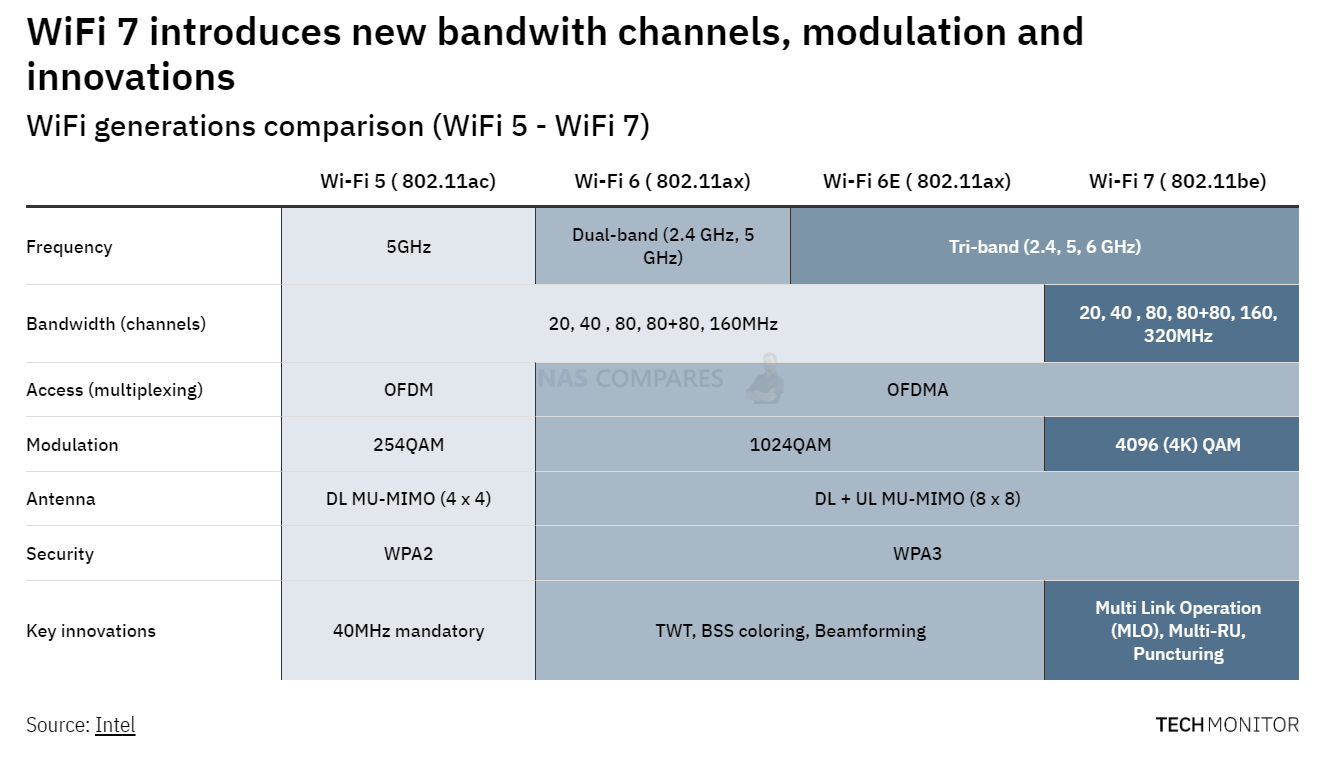
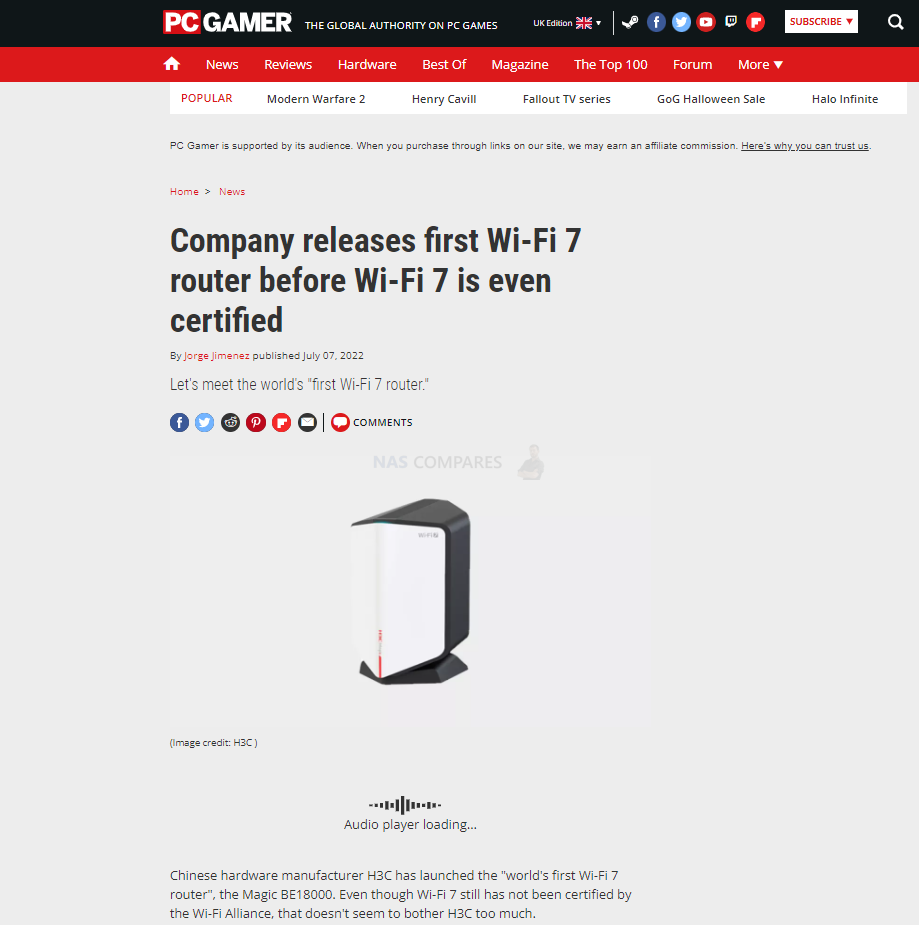
Need More Help Choosing the right Network Solution?
Choosing the right data storage or network solution for your needs can be very intimidating and it’s never too late to ask for help. With options ranging from NAS to DAS, Thunderbolt to SAS and connecting everything up so you can access all your lovely data at the touch of a button can be a lot simpler than you think. If you want some tips, guidance or help with everything from compatibility to suitability of a solution for you, why not drop me a message below and I will get back to you as soon as possible with what you should go for, its suitability and the best place to get it. This service is designed without profit in mind and in order to help you with your data storage needs, so I will try to answer your questions as soon as possible.
📧 SUBSCRIBE TO OUR NEWSLETTER 🔔
🔒 Join Inner Circle
Get an alert every time something gets added to this specific article!
This description contains links to Amazon. These links will take you to some of the products mentioned in today's content. As an Amazon Associate, I earn from qualifying purchases. Visit the NASCompares Deal Finder to find the best place to buy this device in your region, based on Service, Support and Reputation - Just Search for your NAS Drive in the Box Below
Need Advice on Data Storage from an Expert?
Finally, for free advice about your setup, just leave a message in the comments below here at NASCompares.com and we will get back to you. Need Help?
Where possible (and where appropriate) please provide as much information about your requirements, as then I can arrange the best answer and solution to your needs. Do not worry about your e-mail address being required, it will NOT be used in a mailing list and will NOT be used in any way other than to respond to your enquiry.
Need Help?
Where possible (and where appropriate) please provide as much information about your requirements, as then I can arrange the best answer and solution to your needs. Do not worry about your e-mail address being required, it will NOT be used in a mailing list and will NOT be used in any way other than to respond to your enquiry.

|
 |
Gl.iNet Slate 7 PRO Travel Router (and Beryl 7) REVEALED
Minisforum N5 MAX NAS - 16C/32T, 128GB 8000MT RAM, 5xSATA, 5x M.2, 2x10GbE and MORE
The BEST NAS of 2026.... ALREADY??? (UnifyDrive UP6)
How Much RAM Do You Need in Your NAS?
A Buyer's Guide to Travel Routers - GET IT RIGHT, FIRST TIME
Jonsbo N6 DIY NAS Case Review
Access content via Patreon or KO-FI
Discover more from NAS Compares
Subscribe to get the latest posts sent to your email.


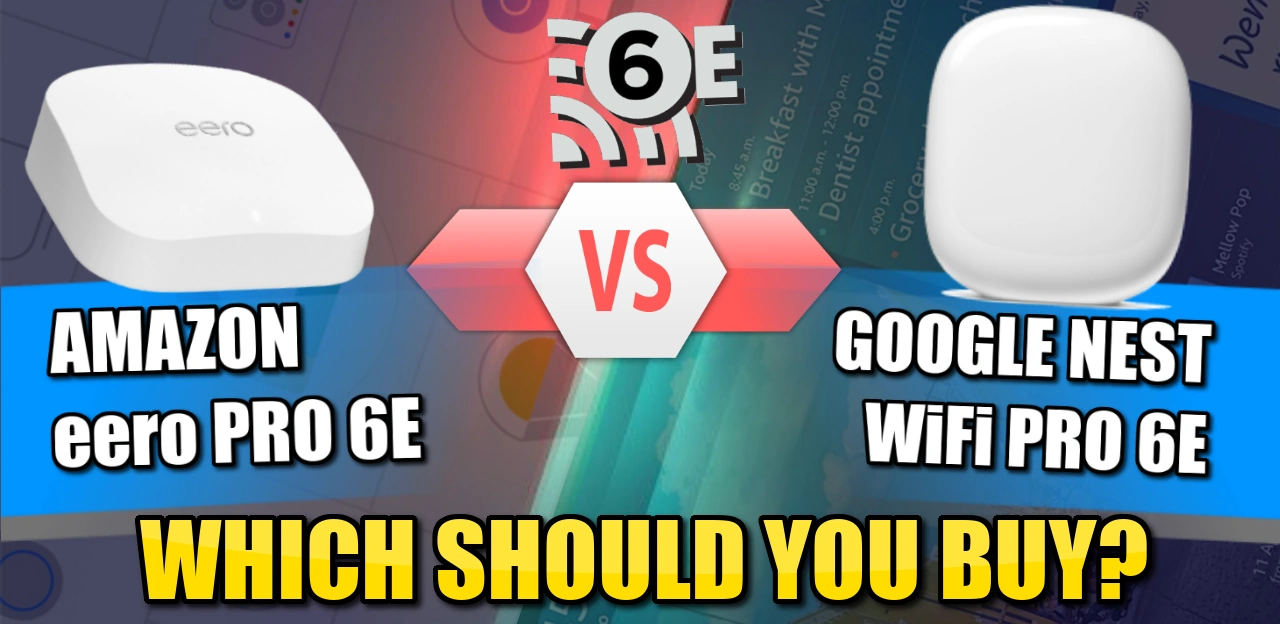

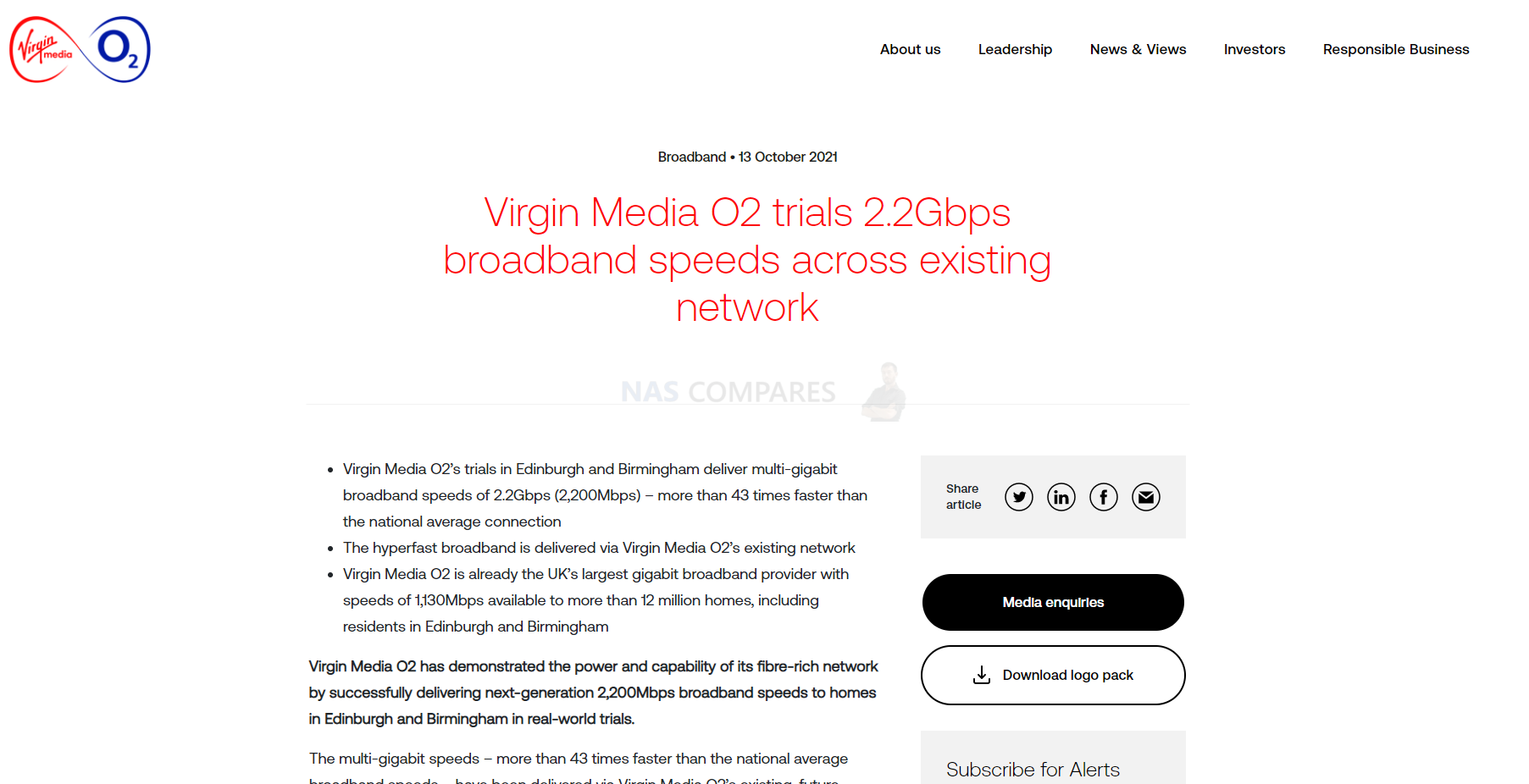

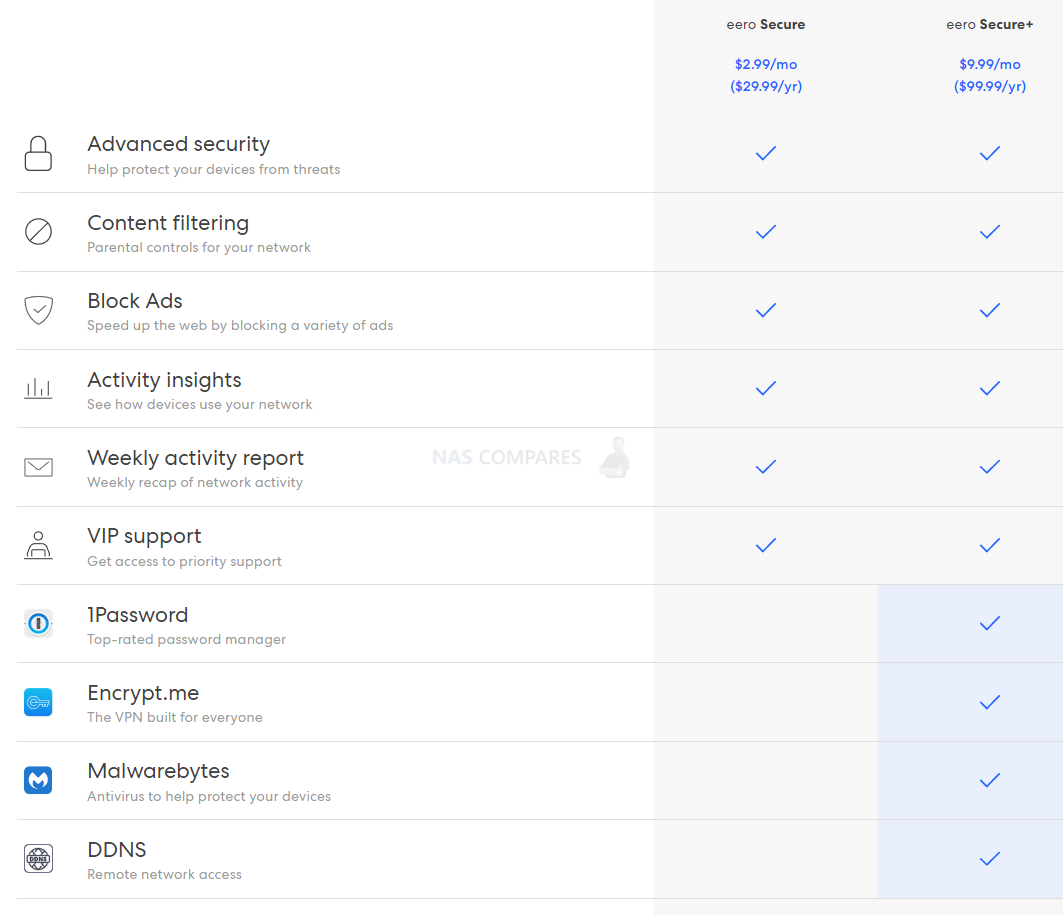
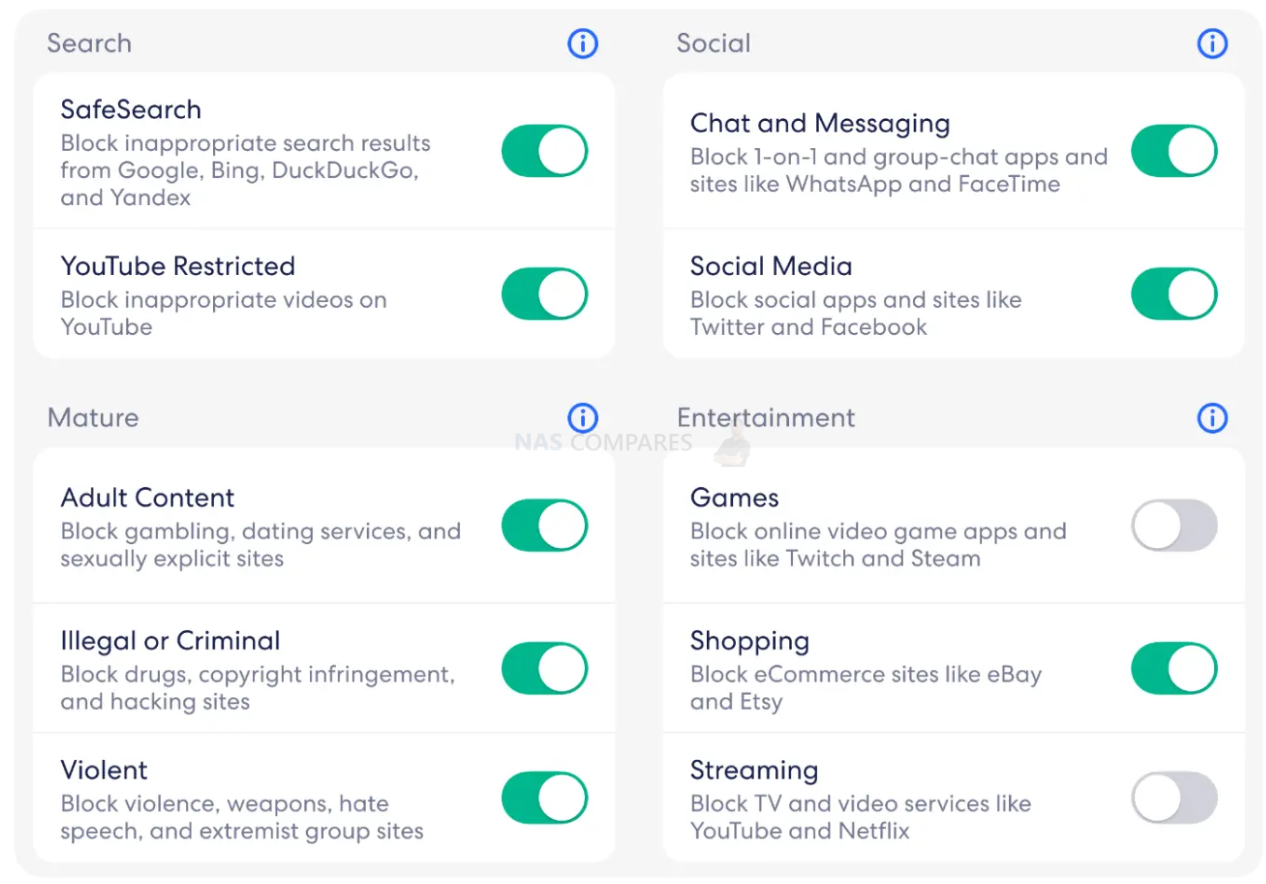



Im not sure 10 gig copper ethernet is the future since they are power hungry and produce lots of heat. I feel 10 gig fiber optic is the future
REPLY ON YOUTUBE
My ethernet cable is made out of 4 wires.
REPLY ON YOUTUBE
Great video, thank you
REPLY ON YOUTUBE
I bought both at the same time to test them out and im keeping the nest wifi pro. My game consoles are getting 300+ donwload and upload speeds consistently. The eero pro 6e only delivers less than 150 on both. And for some reason, my consoles run ipv4 and ipv6 when connected to the nest and only ipv4 when connected to the eero. Ipv6 feature is on on both devices.
REPLY ON YOUTUBE
Did he discuss that the eero has zigbee & I don’t think the Google nest does
REPLY ON YOUTUBE
You won’t ‘bin it’ within 24 months. Unless it’s a TerraMaster which claimed to have a 10GB port, when in fact it seems to have been nothing more than a hole in the case labeled as if it were a port ( yes I tried their support, however that proved fruitless).That’s what happened to me, and yes I binned it. I now have an Asustor and couldn’t be happier. It’s 2.5gb port works as it should.
REPLY ON YOUTUBE
I found even if you dont have fast internet over 1gig getting a router that supports 2.5gbe and getting as many devices on to that on a busy network can help reduce traffic on the local network, large families and small business can benefit from a cheap upgrade to 2.5gbe as most existing Ethernet installs can be upgraded pretty easy buy buying new hardware.
REPLY ON YOUTUBE
Rooters???? routers routers ???????? I guess he already died lol
REPLY ON YOUTUBE
Very happy with google mesh but I am not getting a good RSI to my ring doorbell which is 30-40 ft from the nearest mesh pod.
Any ideas?
REPLY ON YOUTUBE
Try as hard as I like, I can’t saturate my 2.5 gig network. I also have a 5GB fiber connection and, well… even with torrents and usenet running on NVMEs on separate router connections I’ve managed 3GB. For about 30 seconds.
I’ve got a lot of Linux ISOs now, though.
REPLY ON YOUTUBE
9:31 I’m stoned doing “rooter” research for my Google fiber install this week and bros hand goes through the eero. ????????
REPLY ON YOUTUBE
You didn’t say rooter!!! Seriously, people need to get off their high horse…
REPLY ON YOUTUBE
????
REPLY ON YOUTUBE
When I bought a laptop a few years ago, I saw that WiFi 6e was available. I bought a 6e Intel card, only to learn that my HP laptop BIOS only whitelisted certain cards.
REPLY ON YOUTUBE
With 2.5Gbit clients on LAN, 10 Gbit to the NAS probably makes sense because of shared band with….
REPLY ON YOUTUBE
when he called a ROUTER a rooter I spit out my drink. LMAO.
REPLY ON YOUTUBE
Is there a nas motherboard with 3 or 4x 10GbE and 6 sata ports?
REPLY ON YOUTUBE
Great video. Thanks! Another big difference is eero pro 6e has a built-in Zigbee radio while google next pro 6e does not – the additional radio will take up a valuable ethernet port. Or you can just get a gig-e switch
REPLY ON YOUTUBE
1GbE will eventually go the way as single core processors. I have 10GbE in my NAS servers with 16TB of NVMe and I still can’t saturate what a 2.5GbE connection would give me.
REPLY ON YOUTUBE
Dude needs to get his teeth fixed. Guess he’s not heard of implants.
REPLY ON YOUTUBE
I am going for RJ45 10G straight.
Where are the 2,5gb models from synology??? People got to help themselfs with RJ45 to USB dongle workarounds…
Come on Synology….
REPLY ON YOUTUBE
Honestly, if you have a NAS and are using it in any serious way, 2.5Gb should be a minimum at this point. In fact, I’ve found some reasonably priced gear that’s mostly 2.5GbE, with some 10Gb SFP+ ports as well, and will probably run fibre for 10Gb connections to major switches in my house, then the 2.5Gb connections to each individual device. Is fibre overkill? YES, but I WANTED Cat6A years ago and was told “Cat5 is plenty” only to now be unable to do 10Gb. So for that magical future proofing, fibre is going in, and that should basically do the job forever, since the fibre itself can do 400Gb+ it’s just the hardware at each end that would need upgrading. Do I think I’ll ever use 400Gb… no, but 40Gb would be nice, and maybe one day I might want 100Gb, this way we never have to re-run the cables (yes conduit is amazing, and even MORE future proof than fibre, but it’s not viable in an old, existing house like ours without basically moving out for a month).
REPLY ON YOUTUBE
Wao man you are good
Do some smart locks for UK night latche locks
REPLY ON YOUTUBE
been eyeing a 300 dollar Atom device with everything on it which is nice but people hate Atom so am like ok lol
REPLY ON YOUTUBE
Amother chap’s youtube NAS channel says that besides upgrading devices, for 10 gbe you’ll need to upgrade to CAT6 cabling as well – and THAT is a BIG consideration, unless it’s original construction!
REPLY ON YOUTUBE
Yo, never seen this channel before….but just sat “root-er”. If anyone actually has an issue with it, they should just go to therapy ????
REPLY ON YOUTUBE
Neither! The Google Nest Pro is a joke as it doesn’t allow you to control band steering or point steering in addition to having nodes disconnect randomly every now and then. You’re much better off with a real mesh router like the ASUS XD5. Wifi 6 is sufficient as lots of devices have that, 6E is already dead and useless as Wifi 7 has been released before 6E became mainstream.
REPLY ON YOUTUBE
Interesting how much difference a year makes. I just looked on Amazon and you can get four 2.5G ports plus two SFP+ ports for US$55…
REPLY ON YOUTUBE
Can you switch them into ap only mode I don’t want to use as a router. Also if you do that, do you loose the smart home features?
REPLY ON YOUTUBE
I purchasted the Nimbuster NAS from you in 2020 to set up my home network and it’s super slow when connected to a Netgear gigabit switch and trying to save and get files from my Mac or PC. I’ve tried to aggregate the connection from the NAS to the switch but it’s still super slow. I guess the bottleneck is in the gigabit Netgear switch. Would I have to buy a 2-5gbe switch? If so how should it be connected and set up? Many thanks for any advice .
REPLY ON YOUTUBE
My question is 2.5GB enough for a single editor an a NAS?
REPLY ON YOUTUBE
o/ from the US. I recently purchased a ASUS GT-11000 pro (on sale) which has 1 x 10g and 1×2.5g ports. My WAN port on my modem is a 2.5g. I connected my 10g port to my Dlink DMS-106xt. I have my dlink connected to a simple unmanaged cisco switch in my living room that connects to my xbox, ps5, TV, and apple TV, none of which support 2.5gb only 1gb. Then I have my dlink connected to a asus GT6 that supports a 2.5g port and 3x 1gb ports. I learned that I should have bought the Zen wifi pro since it supports two 2.5gb ports. Why this matters to me? My pc supports 2.5gb and 1gb on the mobo. Now I’m not going to lose any sleep over it but since I am designing a network that suits my needs I didn’t account for that error in my budget. After buying all these things I didn’t fully think my network setup thoroughly because now I have to buy another multigig 10G port switch that likely cost 300$ USD to fix my error. I just dont have enough 10g ports now. Problems for future me.
REPLY ON YOUTUBE
I think 2.5GBE is underrated. Getting over 280Ms for file transfer speeds. Its pretty fast for what I do with editing videos
REPLY ON YOUTUBE
Thank you for this video, when I renovated my place with Cat 6A cables I moved to a2 gigabit internet connection just this year, however only recently I have purchased USB 2.5 gb singles to upgrade my connections and it has been amazing, thank you for your video it was informative and helped me make the right decision to wait for a year and then move up
REPLY ON YOUTUBE
10Gb is good for the network backbone, like the unifi aggregation switch is a no brainer
REPLY ON YOUTUBE
We don’t need discuss 2.5 GbE, 1 GbE has effectively been the standard for LANs at the edge for over a decade. Thanks to Moore’s Law, computer power doubles, every 18 months (or less), so very quickly LAN speeds need to improve by an order of magnitude (x 10) to be significant.
What few (none?) of the network companies have realised is that computers now come equipped with Thunderbolt 4/USB4 ports and Thunderbolt Hubs. Over our PANs we are already doing 40 GbE. We need switches with TB4 ports, Fairly predictably, network equipment brands have fallen into the trap of treating 2.5 GbE as the new normal.
The new normal is 40 GbE.
We can do 7+ Gb over 5G mobile networks.
REPLY ON YOUTUBE
2.5g isn’t futureproofing. 10g has been around for much longer than 2.5g or 5g… if you’re going to use cat5/6 cables, just go to 10g. the only reason I can think of that companies are feeding us 2.5 and 5g right now is in attempt to segregate a market that started and should be homogeneous. 10g is the way of things right now, today. but even that’s not futureproofing. if you want to futureproof, you should get 10g sfp+ switches and nics and use om3 fiber and/or dac cables to make your connections. the reason for this is that sfp+ is 10g, uses less power, and if you use fiber connections, that fiber will later be able to run 25g, 50g, and 100g (and probably more later on) via bonding multiple frequencies of laser communications together in a single strand of fiber. if you’re building a house today, put om3 in the walls and be happy. worst case scenario, you want to use one or more rj45 based network devices and you buy a 3-5 port sfp+ switch and use sfp+ to 10g ethernet modules for the devices you want to use. the biggest reasons to go with 10g: copying large files (such as videos you’ve got today with your nice video camera), photos from a dslr camera, high resolution audio recordings, backups to and from your NAS. virtual machine migrations for high availability or automatic resource re balancing for homelabbing and/or hosting of services from your home such as nextcloud, video game servers, plex server so you can store your dvd and blu-ray collection on your NAS and distribute that content to every computer, tv, phone, and tablet in your home and outside of your home when you travel, etc. and now that residential fiber is FINALLY gaining traction (I live in rural ct (I can literally walk to cows) and was just offered symmetrical 5 gigabit fiber (I took them up on the symmetrical 2g fiber because it was the same $110 I was spending on 600/25 from charter spectrum cable)), and in some other places, you can get up to symmetrical 10g now.
REPLY ON YOUTUBE
eero the leader in random reboots
REPLY ON YOUTUBE
My ISP model is 2.5GbE, most recent motherboards are 2.5GbE, NAS more often come with the red 2.5GbE socket now. It’s a no-brainer to just get a 2.5g switch and be done with it. gigabit network is basically slowly dissapearing with the current hardware being sold.
REPLY ON YOUTUBE
The 5gb adapter for qnap makes sense when all the clients for 2.5gb
REPLY ON YOUTUBE
will you notice or need 2.5 times better throughput for local file transfers vs 1gig? if you don’t do much transfers, and you are not running a time critical business(or personal req) that requires it, then probably not.
but where it may matter is for the upcoming wifi 7 stuff will will benefit from multigig (without it, you will simply be bottlenecked. if you are going to get wifi7, get multi gig networking gear to go with it, e.g. switches, nics etc)
homelab networking enthusiasts may also appreciate more than the standard 1gig.
Also in 2023, a lot of motherboards nowadays have 2.5gbe. You would have to go out of your way to go for the cheapest possible motherboard to get a 1gbe port.
REPLY ON YOUTUBE
That thumbnail haha. You’re a funny person.
REPLY ON YOUTUBE
The issue with 2.5G is the switches… If you poke around, you can get 10GbE for the same or less than 2.5G, especially if you like old Enterprise gear as I do. I can set up 10gig for way less than I can for 2.5gig, as Enterprise skipped 2.5Gig thus it’s not around in the used market. If you need managed switches, like I do, then 2.5G actually costs more than 10gig. Since regular cat6 cables can handle 10gig speeds over shorter cable lengths, it’s less of an issue than you make it out to be.
2.5G may be on a lot of new devices, but if the supporting hardware is more expensive than 10gig, it’s pointless.
REPLY ON YOUTUBE
Your talk about futureproofing really hit me. Its one of the reasons (having GbE FTTP WAN/Internet already) I was determined that when I finally paid a decent chunk for a new router, it MUST have at least 2.5GbE WAN and LAN, rather than the 2.5Gbe WAN OR LAN which seems common, and rather defeats the point IMO, as you’ve got an instant bottleneck.
I am looking to upgrade the backhaul around my house fairly soon, as it will mean even if my NAS is still only running 1GBps, I will have full capability to max out the internet AND NAS at the same time across the network, or. if its via a machine with 2.5GbE, maximise the internet AND NAS usage at the same time, all the whilst having overhead so other devices on the network can still communicate with each other. Also means I will not be instantly having to run to upgrade equipment if I 1.8/2/2.5Gb FTTP becomes available.
Im not expecting all of this to happen now. But it may well in the next few years, and will also give additional overhead room for shared bandwidth on the network if multiple machines are heavily active at a given time. Again, not designing around whats capable now,. but what may happen in the next few years.
The only thing delaying the upgrade is the cost of 2,5GbE switches at the moment, multiple machines around my house already have 2.5GbE NICs, but whereas I can get GbE NICs for pennies, a 2.5GbE Switch is still over £100.
REPLY ON YOUTUBE
Your talk about futureproofing really hit me. Its one of the reasons (having GbE FTTP WAN/Internet already) I was determined that when I finally paid a decent chunk for a new router, it MUST have at least 2.5GbE WAN and LAN, rather than the 2.5Gbe WAN OR LAN which seems common, and rather defeats the point IMO, as you’ve got an instant bottleneck.
I am looking to upgrade the backhaul around my house fairly soon, as it will mean even if my NAS is still only running 1GBps, I will have full capability to max out the internet AND NAS at the same time across the network, or. if its via a machine with 2.5GbE, maximise the internet AND NAS usage at the same time, all the whilst having overhead so other devices on the network can still communicate with each other. Also means I will not be instantly having to run to upgrade equipment if I 1.8/2/2.5Gb FTTP becomes available.
Im not expecting all of this to happen now. But it may well in the next few years, and will also give additional overhead room for shared bandwidth on the network if multiple machines are heavily active at a given time. Again, not designing around whats capable now,. but what may happen in the next few years.
The only thing delaying the upgrade is the cost of 2,5GbE switches at the moment, multiple machines around my house already have 2.5GbE NICs, but whereas I can get GbE NICs for pennies, a 2.5GbE Switch is still over £100.
REPLY ON YOUTUBE
.900 Gigabit/s= 112.5 MegaBytes/s = a single spinning rust slow sata hard drive speed
1.1 Gigabit/s= 137.5 MegaBytes/s = a single spinning rust fast sata hard drive speed
2.3 Gigabit/s= 287.5 MegaBytes/s = generic 2.5Gbit/s Linux data rate
4.4 Gigabit/s= 550 MegaBytes/s = a good sata ssd
60 Gigabit/s= 7500 MegaBytes/s = some Gen 4 NVMe PCIe SSDs capable of 7500 MB/s
REPLY ON YOUTUBE
10 GB network is expensive and only makes sense with fiber optic cable. 2.5GB Ethernet can use old CAT5e, CAT6 cables. It also uses less power than 10GB copper Ethernet. Unfortunately, 10GB SFP can not switch to 2.5 GB but then fall back to 1GB.
REPLY ON YOUTUBE
I work in business and small datacenter networking, and anything between 1 and 10 Gbps does not exist. SFP, sure, they’re 1, 10, 25, 40, 100 Gbps.
Even in my home use, I’d rather get everything on 10 Gbps than pay the barely supported premium for 2.5 or 5 Gbps, especially on managed devices.
REPLY ON YOUTUBE
I’m gonna stick to saying, A router is used to cut channels into Wood, Wrong kind of Chsnnel, wrong kind of Router!
We’re British, You know them people from England. The people who are the the definition of ENGLISH.
Well dear Yanky Friends, English isn’t ‘Read As You See It’ You read it as its supposed to be read following the rules of the language. You would programme python and leave out all the indents, Or Write Chinese without using Kanji Characters. Rules are there for a reason.
Follow the rules or get concquerted by the empire!
The way you lot say it is,
Rowtour, But in English this would probably mean ‘Being shown and viewing something whilst travelling by paddling a boat’
REPLY ON YOUTUBE
Sorry, but the American pronunciation of “rout-er” is soooo annoying. Please stick to the correct pronunciation we do here in the UK as “rooter”.
Similarly, route is correctly pronounced as “root” not “rout”!
I often stop listening to the yanks as soon as they pronounce this word incorrectly, same thing I’m doing to your video. Please please please stick to “root/rooter”!
REPLY ON YOUTUBE
You forgot 1 thing speeds between the 2 i came here hoping to see speeds difference the specs dont mean shit i want real world difference from the 2 i still cant decide wich to buy
REPLY ON YOUTUBE
OMG! He is saying it correctly!
REPLY ON YOUTUBE
I’m returning my Google Nest Pro. Slow download / upload speeds. After doing some research, it is a known issue.
REPLY ON YOUTUBE
Haha it’s alright if that’s your country. What irks me is when Americans pronounce words it like British people saying “rooter” instead of “router” or Americans saying “Root” instead of “route.” Because the rest of their English is American except what they picked
REPLY ON YOUTUBE
its complete overkill. more people than not dont yet have access to fttp in the UK for even 1gb and thats going to take a good 5 years at least.
REPLY ON YOUTUBE
Great video by the way. Nice detailed explanation. However being British on a British channel its “rooter”. Americans don’t mind, I work with many and they get it. Same as US channels using “rooter” rather than their own pronunciation of “rowwter”. Americans will never use “rooter” and quite right too. We should though as we are British so no need to pander to anyone.
REPLY ON YOUTUBE
Thank You for your time ⏲???? & thoughts tell me about this is a one-time price to buy the nest you still have to pay a monthly service for internet ?
the Best Information ever.
I took an old satellite dish put some stuff on it and I turn it into a Wi-Fi antenna yeah it’s not secure but it’s free happy holidays Merry Christmas
REPLY ON YOUTUBE
US invented router but UK invented English ????
REPLY ON YOUTUBE
Power consumption is massively missing from these reviews. Anything you are going to have running 27/7, energy usage is such a big thing.
REPLY ON YOUTUBE
I bought the Google Wifi Pro. I did it before watching this review. Honesly it didn’t change much for me. Just a bit of a Back story, I have spectrum internet. its 400mb up and 400mb down. our HOA covers our Cable, and internet, 100% so with that said I don’t need to invest into anything that goes over a gigabit. I wish I did have those speeds, but the Wife and I don’t pay for the internet.
REPLY ON YOUTUBE
2.5GbE .. What “good” is having one (1) 2.5GbE port?? Please enlighten me! N0 what you have is 2.5GbE to the Router with NO usable way to be utilized:
1. All wired connections will be limited to 1Gbps.
2. If wireless Backhauling is employed the WiFi 6E is used therefore your limited to WiFi 5G speeds.
The only way that anything’s usable faster than 1Gbps is to connect via Wi-Fi to the primary router and then only wirelessly and then only if you have Wi-Fi 6E on whatever devices you’re connecting it to and you’re incredibly close as in probably less than 20 ft (~6M).
REPLY ON YOUTUBE
Hi can you review the BT Whole Home systems at all?
Thanks!
REPLY ON YOUTUBE
Hey Buddy does the eero allow you to give priority of bandwidth usage by device like you mentioned when talking about the Google routers?
REPLY ON YOUTUBE
Watching this to see the diff as on Amazon the eero is currently $419 as of this comment.
REPLY ON YOUTUBE
Need Help!
My turn finally to buy a NAS and money isn’t an issue.
I edit 4k multi cam vids all day long and need to work off a NAS that has caching etc. I will need raid to back up work just in case of storage failures. My vid and clips and data are at the moment at around 15T so want a system that can handle that, back it up, and extract the data whenever I need with fast speed.
Again I want the best, something that will last years and not something that will be outdated any time soon.
Speed is the key for me though.
Thanks
REPLY ON YOUTUBE
Google made stupid mistakes with this product. I don’t like the Eero because of how Amazon does VPN.
I use the Deco XE75 Pro for our home. Between that and Pi-hole I’m generally happy.
REPLY ON YOUTUBE
Wish Amplifi updates their router with WiFi 6e and matter. (I know Alien and Unifi WiFi 6 exist, not the same category as HD and Instant).
REPLY ON YOUTUBE
Which will allow Synology to change settings?
REPLY ON YOUTUBE
Just found the channel and subbed, do you have any Orbi reviews?
REPLY ON YOUTUBE
Just notice on Amazon that eero pro 6e set of 3 is now $419, a 40% discount according to Amazon
REPLY ON YOUTUBE
Thank you Rob for the quality of your videos. I can’t believe you made the effort to pronounce router the American way vs the British way and that people get upset about it. Where are we going. There is such intolerance and ignorance out there. I dont care about your accent. I care about the information you provide … and it is very good. May be you should do a video about CULTURAL DIVERSITY for the limited minds. All the best to you.
REPLY ON YOUTUBE
I just took delivery of an RT6600ax thanks to your two reviews. I’m afraid I just don’t trust Google or Amazon any more.
REPLY ON YOUTUBE
Google is starting to remind me of a tech Chinese company. Good specs on paper but no updates and backwards compatibility. Device gets killed for a later device to come along.
REPLY ON YOUTUBE
Great video comparing the two roo-tahs!!!
Something I need clarification on… Let’s say my ISP is giving me 2.5GBPS. I’m assuming Eero will utilize the full speed since it has a 2.5G and 1G port, but google will bottleneck at 1GPS because both ports are 1G.
With the eero, if I wire backhaul it, won’t I be bottlenecked to 1GBPS with every connected eero except the one connected to the modem?
My understanding is the first eero connected to the modem will receive at 2.5GPS because of the 2.5G port, but because the second port is 1G, it will only push out and connect to the other eeros at 1GBPS. Even with a multi gig switch that supports 2.5GPS and connecting the additional eeros via the 2.5G port, I’m still bottlenecked to 1GBPS for the additional eeros, since that second port of the first eero is 1GB and is the weakest link.
REPLY ON YOUTUBE
You got the pronunciation wrong (n-4) times! ????????????
REPLY ON YOUTUBE
You want some more spies,then get for it…….
REPLY ON YOUTUBE
Good job Rob!
REPLY ON YOUTUBE
what about Unifi routers? Will you take a look at them?
REPLY ON YOUTUBE
Here are the FACTS:
* SLOW CONNECTION (wireless & wired), even with Galaxy Tab S8 ULTRA, iPad Pro M2, Z Fold 4 and PIXEL 7 PRO that all have the latest WiFi 6E modem
* The hand-off from the main router to the satellites is NON EXISTENT, even I’m far away from it, as it will still hold on to it, rather than the satellite router that I’m 1 foot away
* WiFi CALLING is NOT working properly, as it keeps dropping our calls
* There’s NO WAY to do a MANUAL software update
* The customer service/technician (or whatever you call them) are ALL clueless, that I’ve called and chatted with them, and that they don’t know NOTHING!
I’ve tried over and over, using wired to my new MAC PRO, and latest Surface Studio computers, and I can’t go over 400Mbps, even when I connect directly to the modem, I can reach 1000 – 1100Mbps of internet speed (I subscribed to 1 Gig (Google Fiber).
Only LIARS will say that theirs is working properly, as I called Costco & Best Buy, and they told me that even they only selling it since last week, there’s MORE RETURN than people keeping it!
Do NOT BUY, and WAIT for GOOGLE to FIX the hardware & software, period.
Have a great day to y’all!
REPLY ON YOUTUBE
I actually clicked the video happily anticipating a good 50 rooters
REPLY ON YOUTUBE
I actually prefer Rooter. ????????. Sounds like something that could give you a good rogering. Never conform, stay true to you. Cheerio ????.
REPLY ON YOUTUBE
I also hate sea gulls. 🙂 Thanks for the helpful comparison.
REPLY ON YOUTUBE
Get your kicks on rowt 66
REPLY ON YOUTUBE
I think 1Gb/s will be sufficient for most house/small business users (except NAS storage, iSCSI) for next 5 or more years.
REPLY ON YOUTUBE
Caught an early Roo-tah! ???? We’re still keeping John Oliver. In all seriousness – thanks for another great breakdown.
REPLY ON YOUTUBE
In is not like England is the home of the English language ????.
REPLY ON YOUTUBE
Curious. How would you say the following: My router will route packets faster then any other router.
REPLY ON YOUTUBE
Moved entire network to 2.5gbe. Pickup up a 453E and a bunch of 2.5 to USB3 and some new switches. Real nice speed boost! No fans, so it is quiet.
REPLY ON YOUTUBE
That was extremely informative, thank you
REPLY ON YOUTUBE
I think at this point it’s pretty safe to say that for most non enterprise applications 2.5Gbe is the horse that is firmly in the lead over 5 and 10
REPLY ON YOUTUBE
I took your advice and went 2.5gbe and also bought a Asustor AS6702T Nas with NVME storage, I am having the easiest of times setting up the Nas it is so simple. Watching Blu-ray files from the Nas is super fast. Thanks for all your help. Looks like I’m planning for 10gbe in the near future.
REPLY ON YOUTUBE
I only have 1Gbe router. If I buy a 2.5Gbe USB C Ethernet adapter, would the speed increase compared to a 1Gbe connection?
REPLY ON YOUTUBE
Workstations have 10gbit on almost every port now USB etc. Except for the one you use the most, your network interface port. It is not overkill, it’s falling behind in my opinion. A lot of people rather have wifi for network connections nowadays cause it is surpassing their cabled network speeds and it is more convenient. If you still care to put a cable through the ceiling you better have something that makes it worth it! Large capacity NAS at the read and write speed of local SSDs.
REPLY ON YOUTUBE
I have 2.5GBe right now. no switch either. just added an extra 2.5g nic in my server and desktop, and have them as an additional direct NIC. updated hosts file on my server and voila, my server can be accessed at 2.5g for $50.
REPLY ON YOUTUBE
Hi m8, watched a good few videos regarding NAS, are you interested in a video tutorial setting up a semi cheap NAS setup with semi total noob build. I Have the parts etc, but cache disk, OS and RAID setup are still total nightmares for someone like myself still surfing channels to find a definitive answer to my questions?
REPLY ON YOUTUBE
I belive wifi ratings include the overhead and payload of packets, where ethernet speeds are just the payload, something to keep in mind
REPLY ON YOUTUBE
I have 2.5G fiber (upgraded from 1G a couple months ago) in my house. I’m still waiting for a router with multiple 2.5G ports. Most only have it on the WAN or the LAN, but not both. Really frustrating. Hopefully that changes with the upcoming Wifi 7 routers.
REPLY ON YOUTUBE
Only the newest 10GbE equipment will negotiate down to 2.5 or 5 gigabit. Those speeds were not available until 2016, when 10 GbE had already been around for a decade.
REPLY ON YOUTUBE
I picked up a QNAP TS453D not long back to replace an older Qnap with the dreaded bad firmware update. It’s got twin 2.5Gbe ports on it but the trouble I’ve found is there’s limited routers and network switches currently available to actually utilise this feature. I even decided to update to a wifi 6 router (as I’ve got a wifi 6 laptop). While the routers got link aggregation, they’re still only 1Gbe ports. The only router that did have 2.5Gbe (ASUS) was considerably more pricey and didn’t have link aggregation either – so barely worse off having twin 1Gbe ports.
Besides, the features only useful IF the laptop had 2.5Gbe capability too. But still OK if you’re running a few devices concurrently sending data (at least the transfer speeds aren’t bottle necked).
REPLY ON YOUTUBE
Wish 2.5GbE would become standard, 1GbE is way to slow these days.
My pc has 2.5GbE, My Router has 2.5GbE, My Synology 5 bay NAS has 1GbE 🙁
Network is only as good as the weakest link.
REPLY ON YOUTUBE
You touched on it, but to expand:
You are only going to get a maximum speed equal to the weakest link in the chain.
If your Internet and router is 2.5gbps, but your switch is 1gbps and your old laptop’s network card is 100mbps, then you will never get performance from that laptop faster than 100mbps.
I have 300mbps ethernet and 1 PC with 1gbps LAN, and 2 PC sticks with 100mbps LAN.
The PC sticks will only ever send/receive at a max of 100mbps to either the internet, the other PC stick, or the PC.
The PC will only get internet of 300mbps and the communication between the PC and the sticks will be 100mbps max.
REPLY ON YOUTUBE
My APs have 2.5Gbe ports. I am researching POE switches with 2.5Gbe ports.
REPLY ON YOUTUBE
I don’t really need 2.5g everywhere , but I would like it on my core connections. sadly I cannot find a cheap 4 or 8 port switch (unmanaged) with a 2.5g uplink port and the rest as 1GB ports . If anyone knows of one , comment below.
REPLY ON YOUTUBE
Fun future-proofing story – built my house over 20 years ago. The town had no cable internet yet, but I still had every phone plate box run with 2 Cat 5 cables. First, wired for multiple phone lines, then DSL came. When real ISP came, 4 wires got me 100Mb speed. As we didn’t need the phone lines for dial up, over time I rewired each port to have full 8 wire 1Gb connectivity.
At 2.5Gb, it’s only one room that needs this. My home office with multiple computers and NAS. Exactly right that 2.5 is pretty cheap to add, and my spinning drives aren’t saturating that. Unless I change to a RAID configuration on the desktop, this setup will work for quite a while.
REPLY ON YOUTUBE
95% of homes have cat5e, so there’s no question of 10GbE without ripping the walls, which isn’t a problem at 2.5GbE. 95% of WiFi6 APs have 1 GbE LAN, so how do you want to use the full WiFi6 bandwidth, between laptop and NAS, laptop and internet etc. If you want to take full advantage of WIFi 6, you have to buy the most expensive AP which has, guess what… 2.5GbE LAN.
REPLY ON YOUTUBE
Yes but only if you buy basic nas’s, 10gbe is better , you can buy 10gbe 2nd hand switches and nics so cheaply now and often only need a switch with 2 x10 for your main pc and nas.
1100mps is what your nas can do in a raid or with m.2 on 10gbe.
280mps is good for budget nas’s where you have max 2 drives mech models or cheap Sata SSD’s its good to see entry level at 2.5gbe
REPLY ON YOUTUBE
Synology Buys holding off for 2.5Gbe
REPLY ON YOUTUBE
Intel Nuc low End I3 have 2.5Gbe now
REPLY ON YOUTUBE
Synology is sadly missing the Boat. I have 1 2.5 Gb Network on almost all the workstations Server, 2.5GBe I will have Fiber connect soon. Qnap and many other have Nas have 2.5Gbe , I have talked to Synology Tech Support no word on any 2.5GBe sadly Nas box after 2.5GB Fiber, will be the slowest device in the Network , Does anyone have and info on 2.5GBe from Synology
Qnap has had it for years
REPLY ON YOUTUBE
Nice! Would like to see a 2.5gb video showing a setup. Maybe with connectivty to NAS devices that don’t have a 2.5gb adapter (usb or card added) and a more modern one. What Cables do i need? Virutalization station concerns? Port binding? that sort of thing.
REPLY ON YOUTUBE
Don’t forget to check your specs. Many early 10Gbe chipsets don’t support 2.5Gbe and 5Gbe. Buying cheaper switches may leave you stuck at 1Gbps if they don’t support the middle speeds.
REPLY ON YOUTUBE
I went with 2.5Gbe on my 4 bay NAS. It’s an older Asustor unit. Several computers need to access it at the same time. My Plex Server saves all DVR files there and my Transcoding setup transfers files off and back on. It really helped with congestion when streaming from Plex. I’d go up to 10Gbe with my next NAS.
REPLY ON YOUTUBE
I really love your videos! You explain things in such clarity just one thing, why are they so long?
I noticed that in one of your videos you repeated the same thing 4 times (different examples) before getting to the heart of the issue.
Can you please try to make your videos shorter?
Thanks!
REPLY ON YOUTUBE
Want full 2.5/10Gb speed? Full DATA PATH upgrade is always required 🙂
2.5Gb should be an entry data speed standard. 1Gb is to just slow for current performance of internal devices. Also 2.5Gb might be last standard that can be thermally manageable in laptops or SFF/Thin clients. 5 and 10 are just too hot. Also 5 and 10Gb are fast but use of external USB/Thunderbolt devices is not what you would call stable…
REPLY ON YOUTUBE
can i use a usb to 2.5gbe on my synology NAS
REPLY ON YOUTUBE
2.5GbE is too slow, I recommend 10GbE ????
REPLY ON YOUTUBE
Thank you for putting this out, practical thinking is hard to do when speed is the topic. Time to stay grounded and avoiding distractions is the way for me. Lol. Cheers.
REPLY ON YOUTUBE
Ese atuendo me vuelve loco fukada-jpp.monster loco contigo y tienes ese cuerpo curvilíneo, hiciste un buen trabajo modelándolo también. También me gusta el último atuendo. Me encantac cómo los cinturones de liga se.
REPLY ON YOUTUBE
I’m just starting to move everything to 2.5gb with my truenas running a 10gb. But I’m also seeing better performance from my 1gb devices.
REPLY ON YOUTUBE
I’m running 10 Gb/s at home so the answer to this debate is kind of obvious to me.
REPLY ON YOUTUBE
Firstly, I am impressed by your ability to count by 2.5. I have a new PC arriving today that has 2.5GbE built in. Luckily, it also has 10GbE built in. (It’s a Core i9 Intel NUC 12 Extreme.) I’ve been 10GbE in my home lab for nearly a decade, starting with a Netgear switch, progressing to as used Arista Networks switch and finally installing a Ubiquiti aggregation switch a few months ago. The Ubiquiti switch has four 25GbE ports as well, so I’ve gone an upgraded my two Dell PowerEdge servers to 25GbE with Mellanox fibre cards. I’ve upgraded my two big Synology NASes as well. The Synologys support the Mellanox cards out of the box. I consider the 2.5GbE standard a “feature” aimed at consumers to get them to buy hardware (again). 10GbE is and has been an enterprise solution for a very long time now. It’s too bad vendors have been so slow to get on the 10GbE bandwagon. A 10GbE NIC or switch shouldn’t have to cost more than a 1GbE or 2.5GbE NIC or switch.
REPLY ON YOUTUBE
For a home/SOHO network, being able to transfer files at around 280MB/s is a big upgrade from just 105MB/s. That reason alone is enough to use 2.5GbE.
REPLY ON YOUTUBE
Any plans to test if it allows better access or throughput to a nas when compared to using gigabit on the same device?
REPLY ON YOUTUBE
2.5Gb is 10 years too late.. huge bottleneck with modern drives.
REPLY ON YOUTUBE
for me convient. faster than 1 GB, cheap, works fine and none of my Hardware is bottlenecking it. Did i think about 10gig…yes, but this would have caused such an upgrade cascade….
REPLY ON YOUTUBE